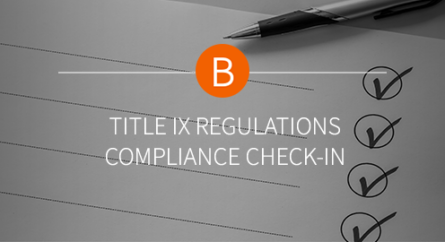Client Alert: EEOC Releases Proposed Guidance on Workplace Harassment
On October 2, 2023, the Equal Opportunity Commission (“EEOC”) formally published its proposed “Enforcement Guidance on Harassment in the Workplace” (the “Proposed Guidance”).
While the Proposed Guidance primarily guides the reader through the fundamental elements of harassment in the workplace and provides clarifying hypotheticals, it also incorporates recent case law and addresses subjects of topical interest, including the increase in remote work, abortion rights, and the #MeToo movement. The EEOC’s handling of notable social touchpoints and recent case law is summarized below.
Guidance Clarifies the Scope of Sex Discrimination or Harassment
In the 2020 case of Bostock v. Clayton County, the Supreme Court held that discrimination or harassment based on “sex,” as prohibited by Title VII of the Civil Rights Act of 1964, includes discrimination based on sexual orientation and gender identity. The Proposed Guidance reflects this decision, stating that Title VII’s protections extend to LGBTQ+ employees.
The Proposed Guidance reminds employers that discrimination and harassment based on “sex” includes harassment based on pregnancy, childbirth, and “related medical conditions.” Taking this a step further, the EEOC states that “related medical conditions” include employees’ decisions related to contraception and abortion.
Guidance Addresses Harassment in a Remote Work Environment
The EEOC clarifies that conduct in a virtual work environment, including electronic communications using private phones, computers or social media accounts, can contribute to a hostile work environment if they impact the workplace. The EEOC adds that, for example, an employee who is the subject of ethnic epithets posted on a coworker’s personal social media page could be subjected to a hostile work environment if the employee is directly exposed to the post or other coworkers see the post and discuss it at work.
Guidance Updates Anti-Harassment Policy Requirements
The EEOC’s most recent Policy Guidance on Current Issues of Sexual Harassment, released in 1990, stated that an employer’s anti-harassment policy must be “clearly and regularly communicated,” include a “procedure for resolving sexual harassment complaints,” “encourage victims of harassment to come forward,” provide reporting options to a reporting party outside of their immediate supervisor, “ensure confidentiality as much as possible,” and “provide effective remedies.”
Largely reflecting existing case law, the Proposed Guidance clarifies that an effective anti-harassment policy should be “comprehensible to workers, including those who the employer has reason to believe might have barriers to comprehension” (e.g., limited English proficiency), and should include:
- A definition of the prohibited conduct;
- A requirement that supervisors report harassment;
- A statement that “[c]learly identifies accessible points of contact” for reporting purposes, including contact information; and
- Explain the complaint process, including “adequate” anti-retaliation and confidentiality protections.
The guidance also includes a “non-exhaustive” list of the elements of an effective training: an overview of the employer’s anti-harassment policy and complaint process; examples of prohibited harassment and conduct that, “if left unchecked,” could rise to the level of harassment; information on rights for those who witness, experience, or report harassment; and information for supervisors and managers on how to “prevent, identify, stop, report, and correct harassment.” The EEOC states that training should be “tailored” to the workplace and workforce, provided on a “regular basis” to all employees, and provided in a “clear, easy-to-understand style and format.”
The Proposed Guidance is available for public comment until November 1st. While the EEOC has previously released proposed harassment guidance without ever finalizing it, employers should expect the EEOC to release a finalized version of the Proposed Guidance after the notice and comment period has expired. Employers should review the Proposed Guidance in full, consider submitting a comment, and keep an eye out for the final version of the guidance.
Categorized: Client Alerts, Publications
Tagged In: discrimination, harassment, remote work, anti-harassment policies











